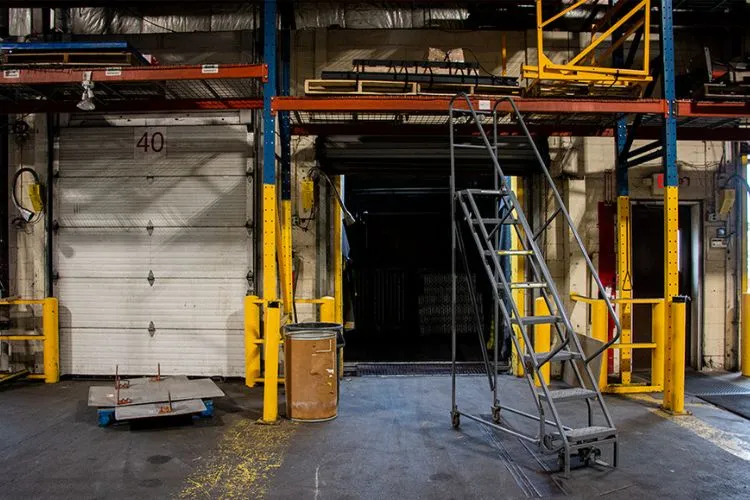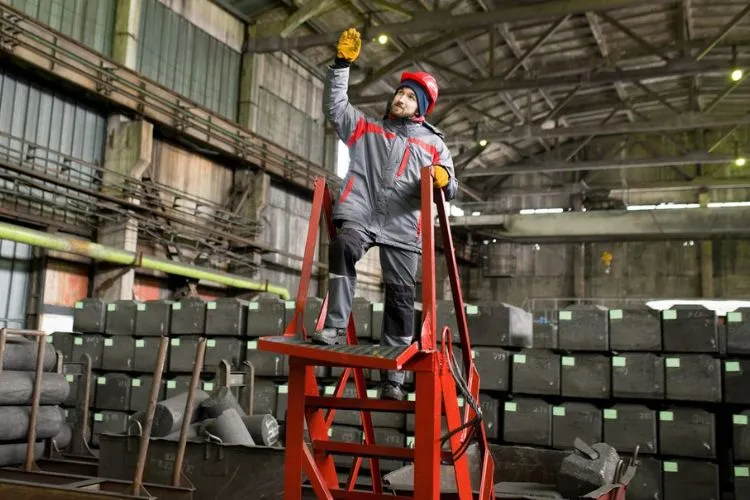Proper access equipment is vital in various industries and environments. Such equipment includes versatile tools like the rolling ladder. The question often arises, “What are rolling ladders used for?” These ladders offer convenient and safe access to elevated areas.
In this article, we will explore the different applications and benefits of rolling ladders. We aim to help you understand how they can enhance productivity and safety in spaces like warehouses, retail areas, libraries, and more.

What Are Rolling Ladders Used for? The Versatility of Rolling Ladders
Rolling ladders find utility in a wide range of settings, thanks to their mobility and stability. Let’s delve into some of the key applications:
Warehouse and Stockroom Applications
Rolling ladders are extensively used in warehouses and stockrooms for various tasks such as inventory management, order picking, and restocking shelves. Their portability enables employees to move around the space effortlessly, saving time and minimizing strain.
Retail and Merchandising Uses
In retail environments, rolling ladders are essential for displaying merchandise on high shelves or racks. Store employees can easily access and arrange products, ensuring effective space utilization and a visually appealing store layout.
Library and Archive Access
Libraries and archives house a vast collection of books, documents, and artifacts. Rolling ladders with a rail system offer librarians and archivists a safe and efficient means of reaching materials stored on high shelves. This ensures easy access to resources, optimizing the retrieval process and promoting efficient research.
Maintenance and Repair Tasks
Rolling ladders play a crucial role in maintenance and repair tasks across industries. Whether it’s accessing machinery for routine maintenance or repairing ceiling fixtures, rolling ladders provide a stable platform for technicians to work on elevated areas, improving efficiency and safety.
Other Industries Benefiting from Rolling Ladders
Apart from the aforementioned applications, rolling ladders find use in industries such as manufacturing, construction, logistics, hospitality, and healthcare. Their versatility allows them to adapt to different job requirements and environments.
Key Features and Safety Considerations
To ensure the safe use of rolling ladders, it is important to understand their key features and consider safety guidelines. Let’s explore some essential aspects:

Types of Rolling Ladders
Rolling ladders come in various types, including platform ladders and step ladders. Platform ladders are suitable for tasks that require an extended working platform, whereas step ladders are ideal for accessing shelves or objects at a specific height.
Weight Capacity and Load Ratings
When selecting a rolling ladder, it is important to consider its weight capacity and load ratings. Manufacturers provide load ratings based on the ladder’s design and intended use. Exceeding the weight limit can compromise safety and stability, leading to accidents.
Safety Features
To prioritize user safety, rolling ladders are equipped with several features. These may include guardrails, non-slip treads, and locking systems. Guardrails prevent falls, while non-slip treads offer enhanced grip, minimizing the risk of slipping. Make sure your rolling ladder has these safety features.
OSHA Regulations and Compliance
The Occupational Safety and Health Administration (OSHA) has established guidelines for the safe use of rolling ladders. Familiarize yourself with these regulations to ensure compliance and a safe working environment. Adhering to OSHA standards enhances workplace safety and mitigates legal risks.
You may also find useful: What Are Fire Escape Ladders? | What Is A Tripod Ladder?
Choosing the Right Rolling Ladder
Selecting the appropriate rolling ladder involves considering various factors. Keep the following considerations in mind:

Assessing Height Requirements
Determine the maximum height you need to reach and choose a rolling ladder that can safely accommodate it. If you anticipate using the ladder in different areas with varying height requirements, consider an adjustable height rolling ladder for added flexibility.
Considering Workspace Constraints
Evaluate the available workspace and dimensions of the areas where the rolling ladder will be used. Ensure that the ladder’s width and length are suitable for the assigned tasks and can navigate comfortably through doorways or narrow aisles.
Evaluating Storage and Mobility Needs
If storage space is limited, opt for a rolling ladder that can be easily folded or compacted for efficient storage. Additionally, prioritize mobility by selecting a ladder with appropriate wheels that can maneuver smoothly on various floor surfaces.
Selecting Materials
Rolling ladders are commonly constructed from aluminum or steel. Aluminum ladders offer lightweight mobility, making them easy to move and position. Steel ladders provide robustness and durability, suitable for heavy-duty applications where strength is paramount.
Best Practices for Using Rolling Ladders
To optimize the usability and safety of rolling ladders, follow these best practices:

Proper Ladder Inspection and Maintenance
Regularly inspect your rolling ladder for any signs of wear, damage, or loose components. Check the wheels, hinges, locking mechanisms, and safety features to ensure they are functional. Any defective or damaged parts should be repaired or replaced promptly.
Training and Safety Guidelines
Train employees on the safe and proper use of rolling ladders. Emphasize the importance of following safety guidelines, such as maintaining three points of contact while climbing and descending the ladder and not exceeding the weight capacity. Awareness of ladder-related hazards promotes a safety-conscious working environment.
Recommended Usage Techniques
When using rolling ladders, ensure that they are positioned on level ground and locked in place before ascending. Maintain a balanced stance while on the ladder, avoiding sudden movements that may compromise stability. If working at height for extended periods, take regular breaks to prevent fatigue.
Equipment Storage and Care
Store rolling ladders in designated areas to prevent damage and ensure longevity. Keep them away from moisture or corrosive substances that may deteriorate their materials. Regularly clean the ladder to remove debris or other substances that may cause slips or falls.
Frequently Asked Questions (FAQs)
What are OSHA requirements for rolling ladders?
OSHA requires rolling ladders to have certain safety features such as guardrails and non-slip treads. Employers should also facilitate proper training for ladder usage and ensure periodic inspections to prevent accidents.
How do I determine the appropriate ladder height?
Assess the maximum elevation you need to reach and select a rolling ladder with a sufficient height to safely accommodate that requirement. Remember to factor in any additional reach needed due to the ladder’s platform or step height.
Can rolling ladders be used outdoors?
The majority of rolling ladders are designed for indoor use. However, some models are equipped with wheels suitable for outdoor terrains. Check the product specifications or consult with the manufacturer to determine the ladder’s outdoor suitability.
Are there weight limitations for rolling ladder usage?
Yes, rolling ladders have weight limitations based on their design and load ratings. Exceeding the weight capacity can compromise safety and stability, increasing the risk of accidents.
What safety precautions should be followed when using rolling ladders?
Prioritize safety by following OSHA guidelines, maintaining the ladder properly, using three points of contact, and avoiding sudden movements. Additionally, ensure that the ladder is correctly positioned and locked in place before climbing.
Conclusion:
Rolling ladders offer a versatile and safe solution for accessing elevated areas in various industries. By understanding their applications, key features, and safety considerations, you can make informed decisions when selecting and using rolling ladders.
Remember to prioritize safety, follow the recommended best practices, and adhere to industry regulations. Unlock the potential of rolling ladders and enhance productivity and safety in your workplace.


